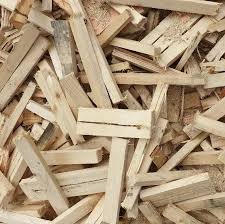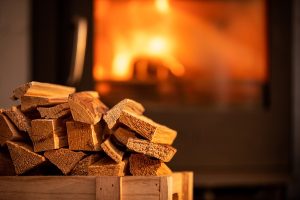A Comprehensive Guide to the Full Process of Kindling Wood
Fire has been a companion to humanity since time immemorial. The flickering flames not only provided warmth but also served as a source of light and a means of cooking. However, the journey from a stack of logs to a crackling fire involves a crucial step: kindling wood. In this guide, we will delve into the full process of kindling wood, exploring the types of kindling, the art of preparation, and the science behind a successful fire-starting venture. Check our guide to firewood for further understanding

Understanding Kindling: The Backbone of a Good Fire
Kindling is the small, easily combustible materials that serve as the foundation for a fire. While logs provide sustained heat, kindling is essential to ignite the initial flames. There are several types of kindling, each with its unique characteristics.
- Tinder: The Ignition Spark
- Tinder refers to the highly flammable materials that catch fire with minimal heat. This can include dry leaves, newspaper shreds, or even specially designed fire-starting materials. Tinder serves as the initial ignition point, creating the necessary heat for the kindling to catch fire.
- Twigs and Small Branches: Building the Foundation
- Once the tinder has ignited, the next step is to introduce twigs and small branches. These materials are still relatively small but provide more sustained combustion compared to tinder. The key is to gradually increase the size of the fuel to maintain a steady progression of the fire.
- Split Wood: Bridging to the Logs
- As the fire grows, larger pieces of kindling, often split firewood, are introduced. These pieces are small enough to catch fire quickly but substantial enough to bridge the transition to the main logs. Properly split wood ensures a smooth transition from kindling to a full-fledged fire.
The Art of Preparation: Gathering and Arranging Kindling
The success of any fire-building endeavor lies in the preparation. Here’s a step-by-step guide to preparing your kindling for a robust fire.
- Gathering Materials: Nature’s Bounty
- Begin by collecting dry materials for tinder, such as leaves, bark, or dry grass. Twigs and small branches, easily found on the forest floor, are ideal for the next stage. If you’re at home, newspaper shreds and specially designed fire starters are excellent choices for tinder.
- Organizing the Kindling Pile: Size Matters
- Sort your kindling materials by size. Tinder should be finely shredded or arranged in a way that allows for easy ignition. Twigs and small branches can be organized by size, with the smallest at the bottom and progressively larger pieces on top.
- Creating a Stable Base: The Fire Lay Technique
- The way you arrange your kindling can significantly impact the fire’s success. Consider using the “fire lay” technique, where tinder is at the center, surrounded by a pyramid of twigs and small branches. This structure promotes airflow, crucial for efficient combustion.
The Science of Fire: Understanding the Elements
Fire is a chemical reaction between fuel, heat, and oxygen. Understanding this science is key to mastering the full process of kindling wood.
- The Fire Triangle: Fuel, Heat, and Oxygen
- The fire triangle represents the three essential elements for combustion. Fuel, in the form of kindling, needs heat to initiate the reaction. Oxygen from the air supports the combustion process. Ensuring the right balance of these elements is crucial for a successful fire.
- Ignition Temperature: The Starting Point
- Different materials have different ignition temperatures—the temperature at which they start to burn. Tinder, with its low ignition temperature, quickly catches fire from a match or spark. As the flames grow, the heat increases, allowing larger kindling to ignite.
- Airflow: Oxygen’s Role
- Adequate airflow is vital for sustaining a fire. The arrangement of kindling materials, as well as the design of the fire lay, influences the availability of oxygen. Proper ventilation ensures that the fire continues to burn efficiently.
Troubleshooting: Common Challenges and Solutions
Even with careful preparation, challenges may arise during the kindling process. Here are common issues and how to address them.
- Wet Kindling: Overcoming Moisture
- Wet or damp kindling can pose a significant challenge. Ensure your kindling materials are thoroughly dry before starting the fire. If you’re in a wet environment, consider bringing dry kindling from home or using specially designed waterproof fire starters.
- Insufficient Ignition: Adding More Tinder
- If your kindling is struggling to catch fire, add more tinder to increase the heat. Ensure that the initial ignition point is robust enough to ignite the next layer of kindling.
- Inadequate Airflow: Adjusting the Arrangement
- If the fire seems to be smoldering rather than burning, assess the airflow. Adjust the arrangement of your kindling to allow for better oxygen circulation. The fire lay technique can be modified to improve ventilation.
Conclusion: Mastering the Dance of Flames
In conclusion, the full process of kindling wood is a delicate dance of preparation, science, and troubleshooting. By understanding the types of kindling, mastering the art of preparation, and appreciating the science of fire, you can unlock the secrets to a successful fire-starting venture. So, the next time you gather around a campfire or cozy up to a fireplace, remember the intricate steps that transform a pile of wood into a mesmerizing display of warmth and light. Happy fire-making!
